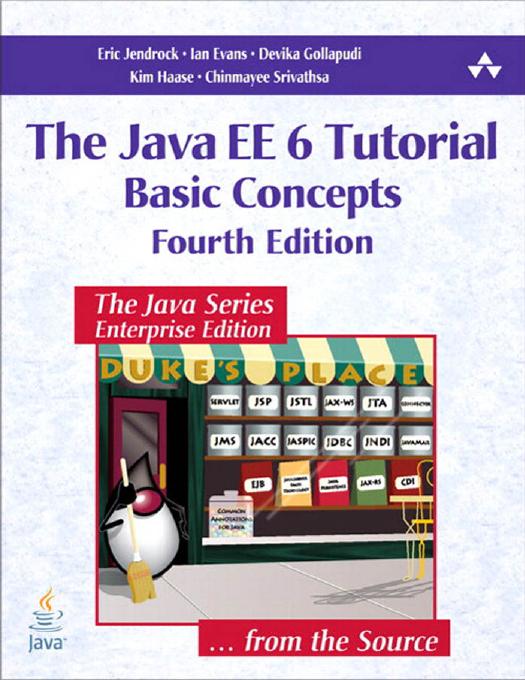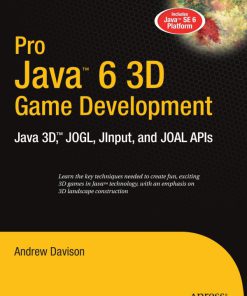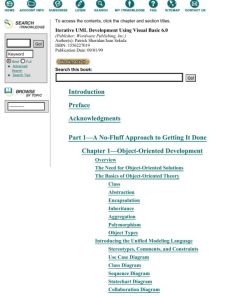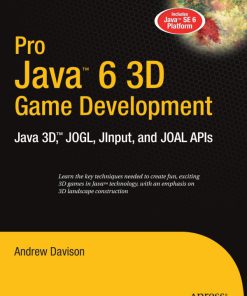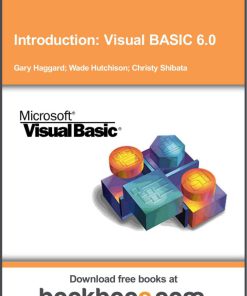The Java EE 6 Tutorial Basic Concepts 4th Edition by Eric Jendrock, Ian Evans, Devika Gollapudi, Kim Haase, Chinmayee Srivathsa ISBN 0137081855 9780137081851
$50.00 Original price was: $50.00.$25.00Current price is: $25.00.
Authors:Eric Jendrock, Ian Evans, Devika Gollapudi, Kim Haase, Chinmayee Srivathsa , Tags:Prentice Hall; 0137081855 , Author sort:Eric Jendrock, Ian Evans, Devika Gollapudi, Kim Haase, Chinmayee Srivathsa , Ids:9780137081851 , Languages:Languages:eng
The Java EE 6 Tutorial Basic Concepts 4th Edition by Eric Jendrock, Ian Evans, Devika Gollapudi, Kim Haase, Chinmayee Srivathsa – Ebook PDF Instant Download/Delivery. 0137081855, 9780137081851
Full download The Java EE 6 Tutorial Basic Concepts 4th Edition after payment
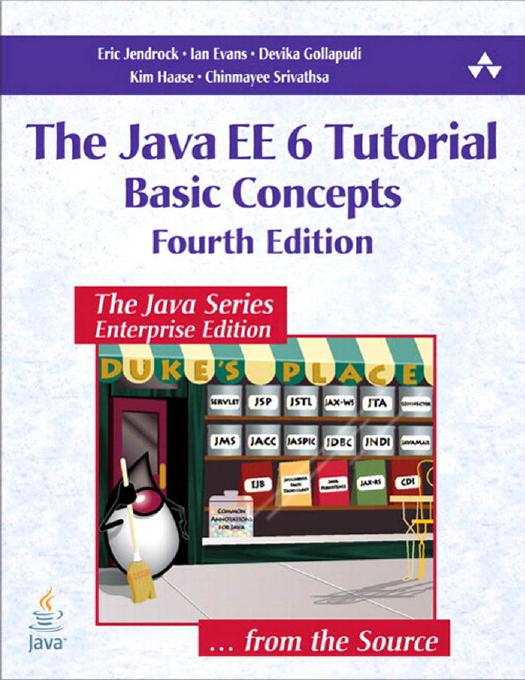
Product details:
ISBN 10: 0137081855
ISBN 13: 9780137081851
Author: Eric Jendrock, Ian Evans, Devika Gollapudi, Kim Haase, Chinmayee Srivathsa
The Java EE 6 Tutorial: Basic Concepts, Fourth Edition, is a task-oriented, example-driven guide to developing enterprise applications for the Java Platform, Enterprise Edition 6 (Java EE 6). Written by members of the Java EE 6 documentation team at Oracle, this book provides new and intermediate Java programmers with a deep understanding of the platform.
Starting with expert guidance on web tier technologies, including JavaServer Faces and Facelets, this book also covers building web services using JAX-WS and JAX-RS, developing business logic with Enterprise JavaBeans components, accessing databases using the Java Persistence API, securing web and enterprise applications, and using Contexts and Dependency Injection for the Java EE platform.
This edition contains extensive new material throughout, including detailed introductions to the latest APIs and platform features, and instructions for using the latest versions of GlassFish Server Open Source Edition and NetBeans IDE. Key platform features covered include
- Convention over configuration, so developers need specify only those aspects of an application that vary from the convention
- Annotated POJOs (Plain Old Java Objects) with optional XML configuration
- Simplified but more flexible packaging
- Lightweight Web Profile that is ideal for developing web applications
The Java Series…from the Source
Since 1996, when Addison-Wesley published the first edition of The Java Programming Language by Ken Arnold and James Gosling, this series has been the place to go for complete, expert, and definitive information on Java technology. The books in this series provide the detailed information developers need to build effective, robust, and portable applications and are an indispensable resource for anyone using the Java platform.
The Java EE 6 Tutorial Basic Concepts 4th Table of contents:
-
Building Java EE Applications
- Overview of Java EE Application Structure
- Understanding the Deployment Descriptor
- Java EE Modules: EJB, JPA, Servlet, and JSP
- Packaging and Deploying Java EE Applications
- Using the Java EE Application Client
-
Java EE Web Applications
- Introduction to Web Applications in Java EE
- Servlets: Basics and Lifecycle
- JavaServer Pages (JSP): Basics and Tags
- Combining Servlets and JSPs
- Java EE Web Application Deployment
-
Enterprise JavaBeans (EJB)
- Overview of EJB in Java EE 6
- EJB Types: Stateless, Stateful, and Singleton Beans
- EJB Methods: Local and Remote Interfaces
- Dependency Injection in EJB
- EJB Transaction Management and Security
- EJB Timer Service and Asynchronous Methods
-
Java Persistence API (JPA)
- Introduction to JPA and Object-Relational Mapping (ORM)
- JPA Annotations and Entity Classes
- Creating and Querying Entities with JPQL (Java Persistence Query Language)
- Relationships: One-to-One, One-to-Many, Many-to-Many
- JPA Entity Manager and Transactions
- Best Practices for JPA and Entity Relationships
-
Java Message Service (JMS)
- Introduction to JMS and Messaging in Java EE
- Types of Messaging: Point-to-Point and Publish-Subscribe
- JMS Producer and Consumer
- JMS Messaging Patterns
- JMS Transactions and Security
-
Java Web Services
- Introduction to Web Services in Java EE 6
- SOAP Web Services with JAX-WS
- RESTful Web Services with JAX-RS
- Developing and Consuming Web Services
- Web Service Security
- Web Service Clients in Java EE
-
Java EE Security
- Overview of Java EE Security Model
- Authentication and Authorization in Java EE
- Role-Based Access Control (RBAC)
- Securing EJB, Web, and Web Services Applications
- Using JAAS (Java Authentication and Authorization Service)
- SSL and Secure Communication
-
Contexts and Dependency Injection (CDI)
- Introduction to CDI in Java EE 6
- CDI Basics: Beans and Contexts
- Using Dependency Injection in Java EE 6
- CDI Interceptors and Decorators
- CDI Events and Observers
- Integrating CDI with Other Java EE Technologies
-
Java EE Transactions
- Introduction to Java EE Transactions
- Container-Managed Transactions vs. Bean-Managed Transactions
- Transaction Management with EJB and JPA
- Using the Java Transaction API (JTA)
- Managing Transactions Across Multiple Resources
- Transaction Isolation Levels and Propagation
-
Java EE Asynchronous Processing
- Introduction to Asynchronous Processing in Java EE
- Asynchronous EJB Methods
- Using the @Asynchronous Annotation
- Asynchronous Servlets and Listeners
- Event-Driven Architecture and Concurrency
-
Java EE 6 New Features
- Simplified Web Application Development with Annotations
- Improvements to EJB and JPA
- CDI for Dependency Injection and Context Management
- New Annotations for Security and Transactions
- Enhancements to Web Services: JAX-RS
- Improved Java EE 6 APIs and Integration with Other Technologies
-
Deploying Java EE Applications
- Java EE Application Servers Overview
- Deploying Applications to GlassFish
- Monitoring and Managing Java EE Applications
- Configuring Java EE Applications for Different Environments
- Troubleshooting and Debugging Java EE Applications
-
Best Practices and Design Patterns
- Java EE 6 Best Practices for Application Design
- Common Design Patterns in Java EE
- Performance and Scalability Considerations
- Error Handling and Logging in Java EE
- Code Quality and Maintainability Tips
People also search for The Java EE 6 Tutorial Basic Concepts 4th:
the java ee 6 tutorial: basic concepts
the java ee 8 tutorial
the java ee 6 tutorial basic concepts
the java tutorial
java tutorial 6
You may also like…
eBook PDF
Methods in Neurosciences 1st edition by Ian Phillips, Dwight Evans ISBN 0121852946 9780121852948

